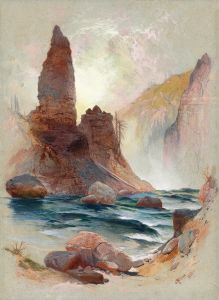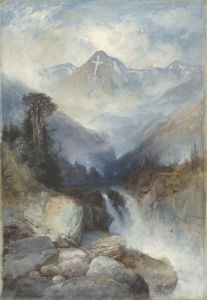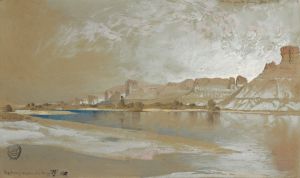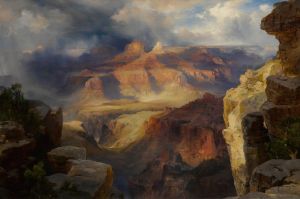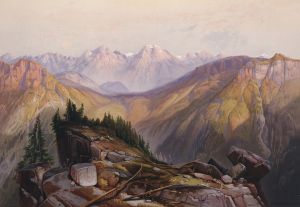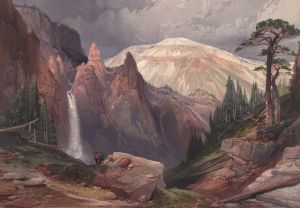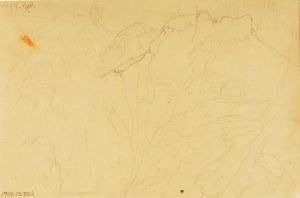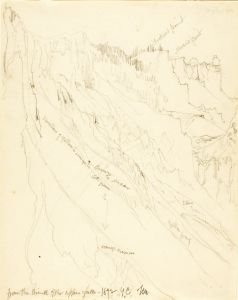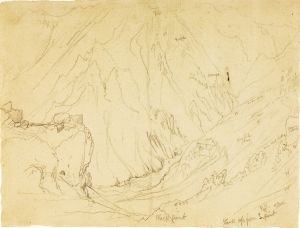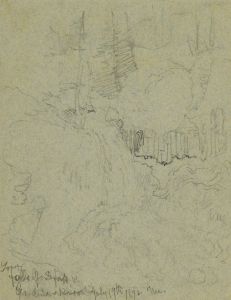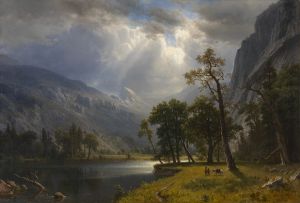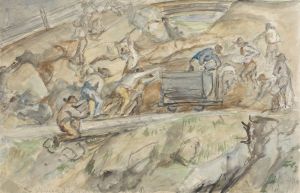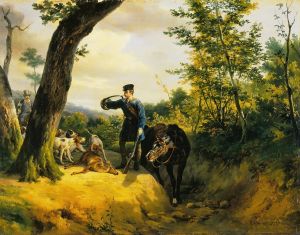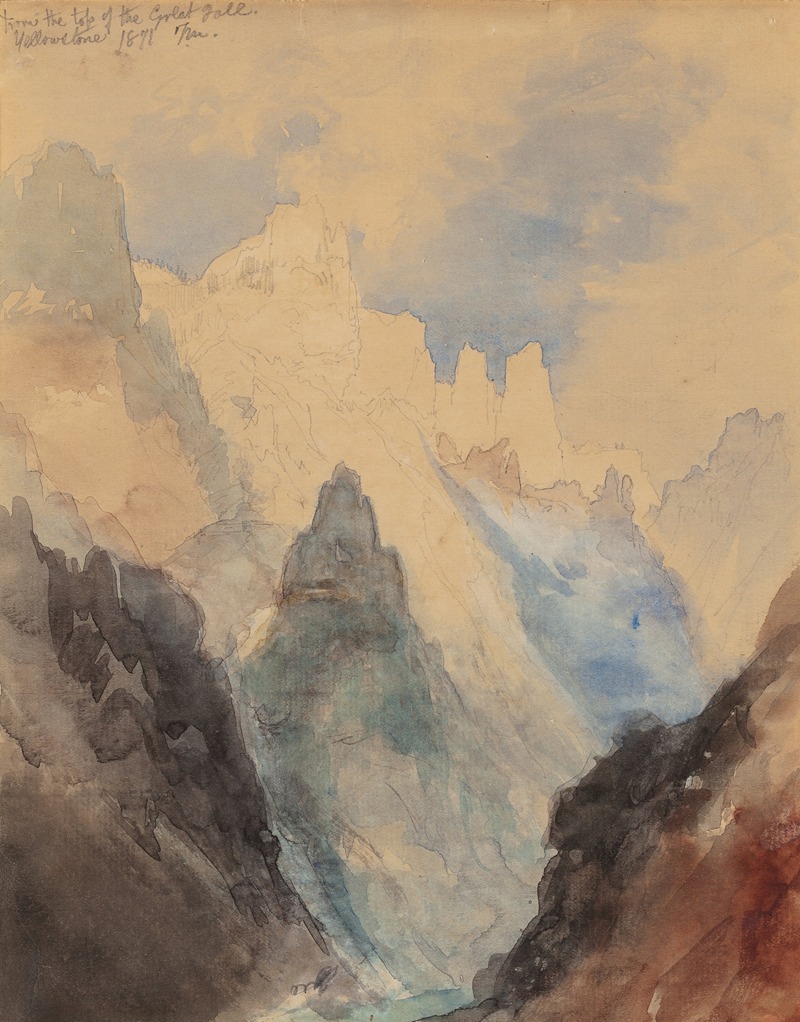
From the Top of Great Fall, Yellowstone
A hand-painted replica of Thomas Moran’s masterpiece From the Top of Great Fall, Yellowstone, meticulously crafted by professional artists to capture the true essence of the original. Each piece is created with museum-quality canvas and rare mineral pigments, carefully painted by experienced artists with delicate brushstrokes and rich, layered colors to perfectly recreate the texture of the original artwork. Unlike machine-printed reproductions, this hand-painted version brings the painting to life, infused with the artist’s emotions and skill in every stroke. Whether for personal collection or home decoration, it instantly elevates the artistic atmosphere of any space.
"From the Top of the Great Fall, Yellowstone" is a painting by the American artist Thomas Moran, a prominent figure in the Hudson River School and Rocky Mountain School of landscape painting. Completed in 1873, the artwork depicts the dramatic scenery of the Yellowstone region, specifically the view from the top of the Great Falls of the Yellowstone River, now commonly referred to as the Lower Falls. This location is one of the most iconic and frequently depicted landmarks within Yellowstone National Park, known for its striking natural beauty and geological significance.
Thomas Moran's work played a pivotal role in shaping public perception of the American West during the 19th century. His paintings, including this one, were instrumental in the campaign to establish Yellowstone as the first national park in the United States in 1872. Moran accompanied the Hayden Geological Survey of 1871, led by Ferdinand V. Hayden, which was one of the first federally funded expeditions to explore the Yellowstone region. During this expedition, Moran created numerous sketches and studies of the area's landscapes, which later served as the basis for his finished paintings.
"From the Top of the Great Fall, Yellowstone" exemplifies Moran's ability to capture the grandeur and sublime qualities of the American wilderness. The painting features a sweeping view of the canyon carved by the Yellowstone River, with the waterfall cascading dramatically into the depths below. Moran's use of light, color, and detail conveys both the scale and the awe-inspiring beauty of the scene. His work often emphasized the interplay between natural elements, such as the rugged cliffs, rushing water, and atmospheric effects created by mist and sunlight.
The painting reflects Moran's artistic style, which combined realism with romanticism. While he sought to accurately depict the landscapes he encountered, he also infused his works with a sense of wonder and idealism, emphasizing the spiritual and emotional impact of nature. This approach resonated with audiences of the time, contributing to the growing appreciation for the preservation of America's natural heritage.
Today, "From the Top of the Great Fall, Yellowstone" is regarded as an important example of Moran's contributions to American art and environmental conservation. The painting is part of the broader legacy of his work, which continues to inspire admiration for the landscapes of the American West and the efforts to protect them for future generations.





